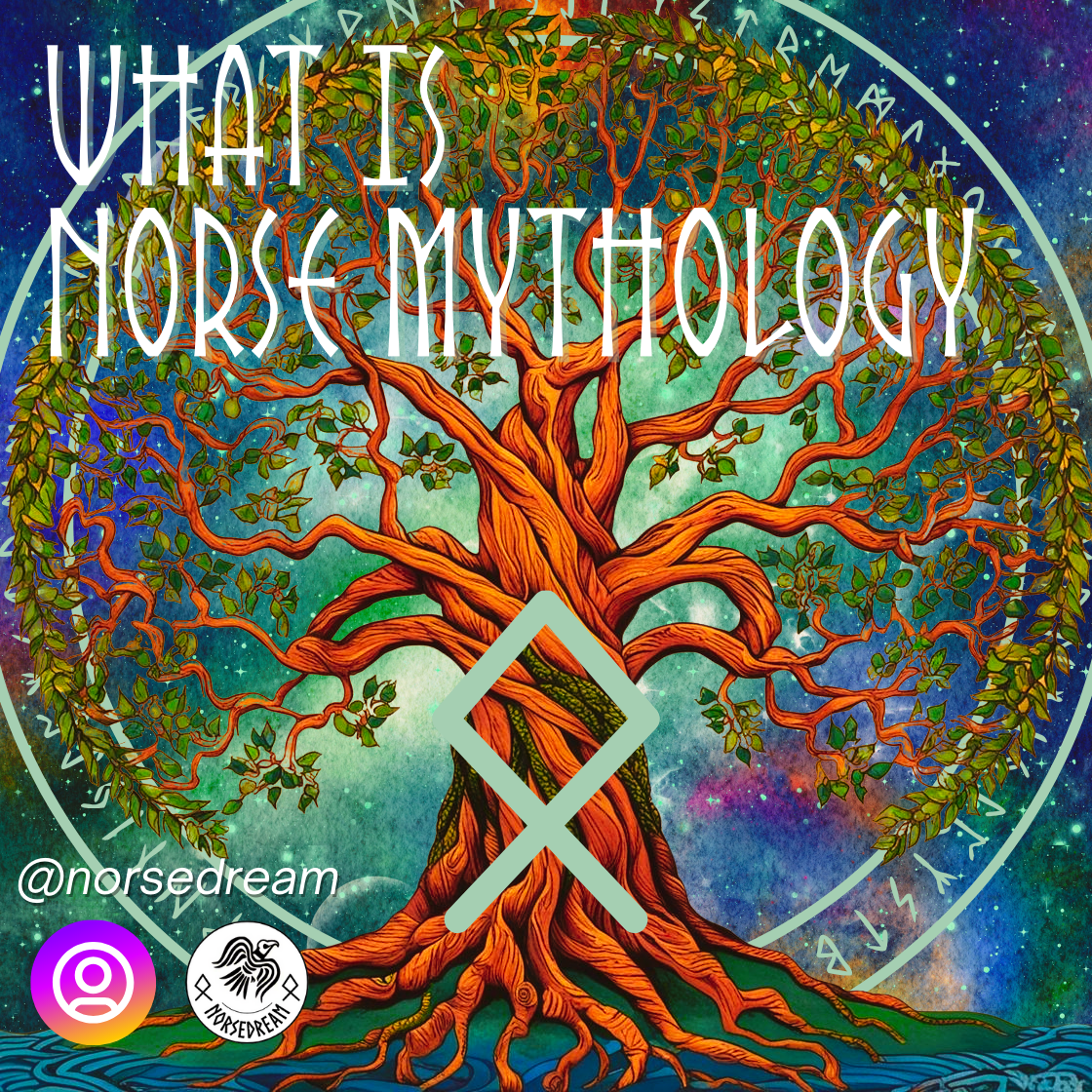Norse mythology is the rich tapestry of myths, legends, and beliefs that emerged from the ancient Norse people, primarily in Scandinavia and Iceland, during the Viking Age (circa 793–1065 CE). These stories, passed down orally for generations before being written down in the medieval period, offer profound insights into the worldview, values, and spirituality of the Norse people.
A Universe of Nine Realms
At the heart of Norse mythology lies a vast and interconnected cosmos comprising nine realms. These realms are held together by Yggdrasil, the immense World Tree, whose roots and branches connect all existence.
Among the 9 realms, we find:the most important;
- Asgard: Home of the gods, ruled by Odin.
- Midgard: The world of humans.
- Jotunheim: The realm of the giants, often in conflict with the gods.
- Helheim: The land of the dead, presided over by Hel, Loki’s daughter.
Each realm is imbued with its own unique character and significance, creating a cosmology that is both complex and deeply symbolic.
Gods, Giants, and Other Beings
Norse mythology is populated by a host of fascinating beings, each with their own stories and traits. The two primary groups of gods are:
- The Aesir: Gods of war and governance, including Odin, Thor, and Frigg.
- The Vanir: Gods associated with nature and fertility, such as Freyr and Freyja.
Giants, or Jotnar, often serve as adversaries or rivals to the gods, but they also share complex relationships with them, sometimes as allies or even family. Other beings, such as dwarves and elves, play vital roles in crafting magical artifacts and influencing the fate of the gods and humans.
Key Themes and Stories
Norse mythology is filled with tales of heroism, betrayal, and cosmic struggle.
Some of the most famous myths include:
- The Creation of the World: From the clash of fire and ice, the first beings emerged, including the primordial giant Ymir.
- The Death of Balder: A story of loss and foreboding, signaling the eventual arrival of Ragnarök.
- Thor’s Adventures: Tales of the thunder god battling giants and retrieving his stolen hammer.
- Ragnarök: The apocalyptic end of the world, where gods and giants clash in a final, destructive battle, only for a new world to arise from the ashes
.
Values and Beliefs
The myths reflect the Norse people’s values, emphasizing courage, honor, and the acceptance of fate. The concept of wyrd (fate) plays a significant role, suggesting that while one cannot escape destiny, how one faces it defines their character. The gods themselves are subject to fate, highlighting a worldview where even divine beings are not omnipotent.
Sources of Norse Mythology
Our knowledge of Norse mythology comes primarily from medieval texts written in Iceland, such as the Poetic Edda and the Prose Edda by Snorri Sturluson. These works, though written centuries after the Viking Age, preserve the essence of the oral traditions and provide a glimpse into the ancient Norse mindset.
The Legacy of Norse Mythology
Norse mythology continues to captivate people around the world with its powerful stories, timeless themes, and vivid characters. Its influence can be seen in modern literature, films, and art, as well as in the enduring fascination with Viking culture.
By exploring Norse mythology, we connect with a world that celebrates the resilience of the human spirit, the mysteries of nature, and the ever-turning cycle of creation and destruction.


